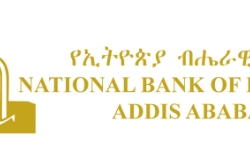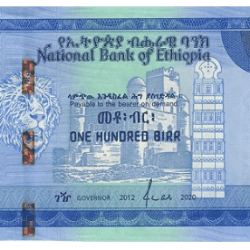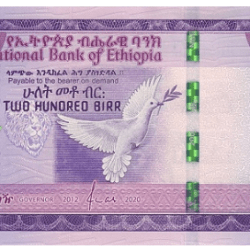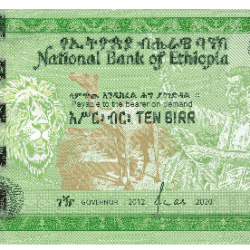The National Bank of Ethiopia is the country’s central bank.
It’s the federal government banker and the regulator of the banking industry in the country.
Location: Addis Ababa, Ethiopia
Tel: +251 115 517430
Fax: +251 115 514588
Email: nbe.excd@telecom.net.et
P.O. Box: 5550

The National Bank of Ethiopia was established in 1963 by proclamation 206 of 1963 and began operation in January 1964.

The National Bank of Ethiopia was established in 1963 by proclamation 206 of 1963 and began operation in January 1964. Prior to this proclamation, the Bank used to carry out dual activities, i.e. commercial banking and central banking.

The proclamation raised the Bank’s capital to Ethiopian dollars 10.0 million and granted broad administrative autonomy and juridical personality. Following the proclamation the National Bank of Ethiopia was entrusted with the following responsibilities.
- To regulate the supply, availability and cost of money and credit.
- To manage and administer the country’s international reserves.
- To license & supervise banks & hold commercial banks reserves & lend money to them.
- To supervise loans of commercial banks and regulate interest rates.
- To issue paper money and coins.
- To act as an agent of the Government.
- To fix and control the foreign exchange rates.
However, monetary and banking proclamation No. 99 of 1976 came into force on September 1976 to shape the Bank’s role adoring to the socialist economic principle that the country adopted. Hen e the Bank was allowed to participate actively in national planning, specifically financial planning, in cooperation with the concerned state organs.

The Bank’s supervisory area was also increased to include other financial institutions such as insurance institutions, credit cooperatives and investment-oriented banks. Moreover the proclamation introduced the new Ethiopian currency called ‘birr’ in place of the former Ethiopia Dollar that eased to be legal tender thereafter.

The proclamation revised the Bank’s relationship with Government. It initially raised the legal limits of outstanding government domestic borrowing to 25% of the actual ordinary revenue of the government during the proceeding three budget years as against the proclamation 206/1963, which set it to be 15%.
This proclamation was in force till the new proclamation issued in 1994 to reorganize the Bank according to the market-based economic policy so that it could foster monetary stability, a sound financial system and such other credit and exchange conditions as are conducive to the balanced growth of the economy of the country. Accordingly the following are some of the powers and duties vested in the Bank by proclamation 83/1994.
- Regulate the supply and availability of money & credit and applicable interest and other changes.
- Set limits on gold and foreign exchange assets which banks and other financial institutions authorized to deal in foreign exchange an hold in deposits.
- Set limits on the net foreign exchange position and on the terms and amount of external indebtedness of banks and other financial institutions.
- Make short and long-term refinancing facilities available to banks and other financial institutions.
Moreover, the proclamation has also raised the paid-up capital of the Bank from Birr 30.0 million to Birr 50.0 million.
The agreement that was reached in 1905 between Emperor Minilik II and Mr. Ma Gillivray, representative of the British owned National Bank of Egypt marked the introduction of modern banking in Ethiopia.
Following the agreement, the first bank called Bank of Abysinia was inaugurated in Feb.16, 1906 by the Emperor.
The Bank was totally managed by the Egyptian National Bank and the following rights and concessions were agreed upon the establishment of Bank of Abyssinia
Reference: Home – National Bank (nbe.gov.et)













